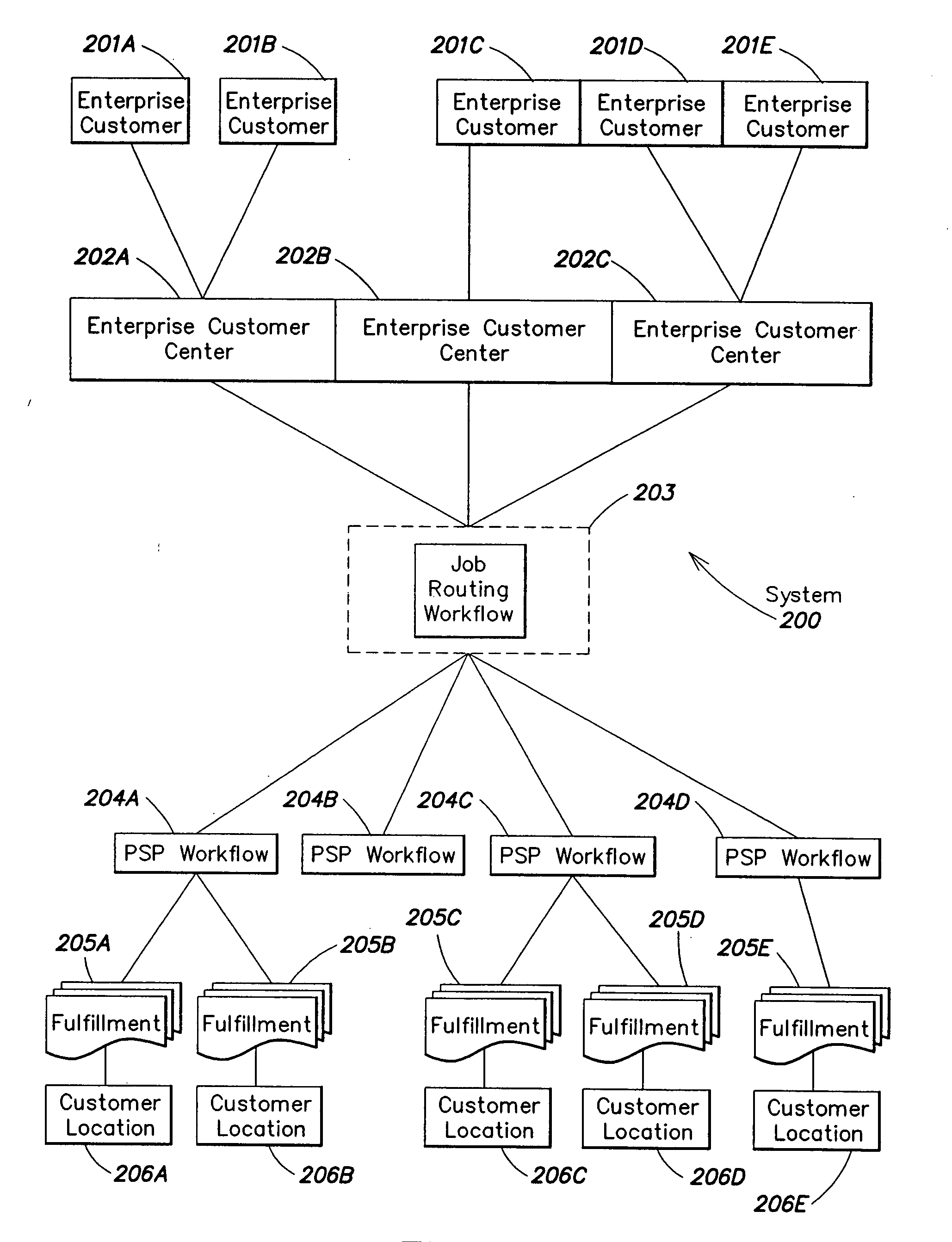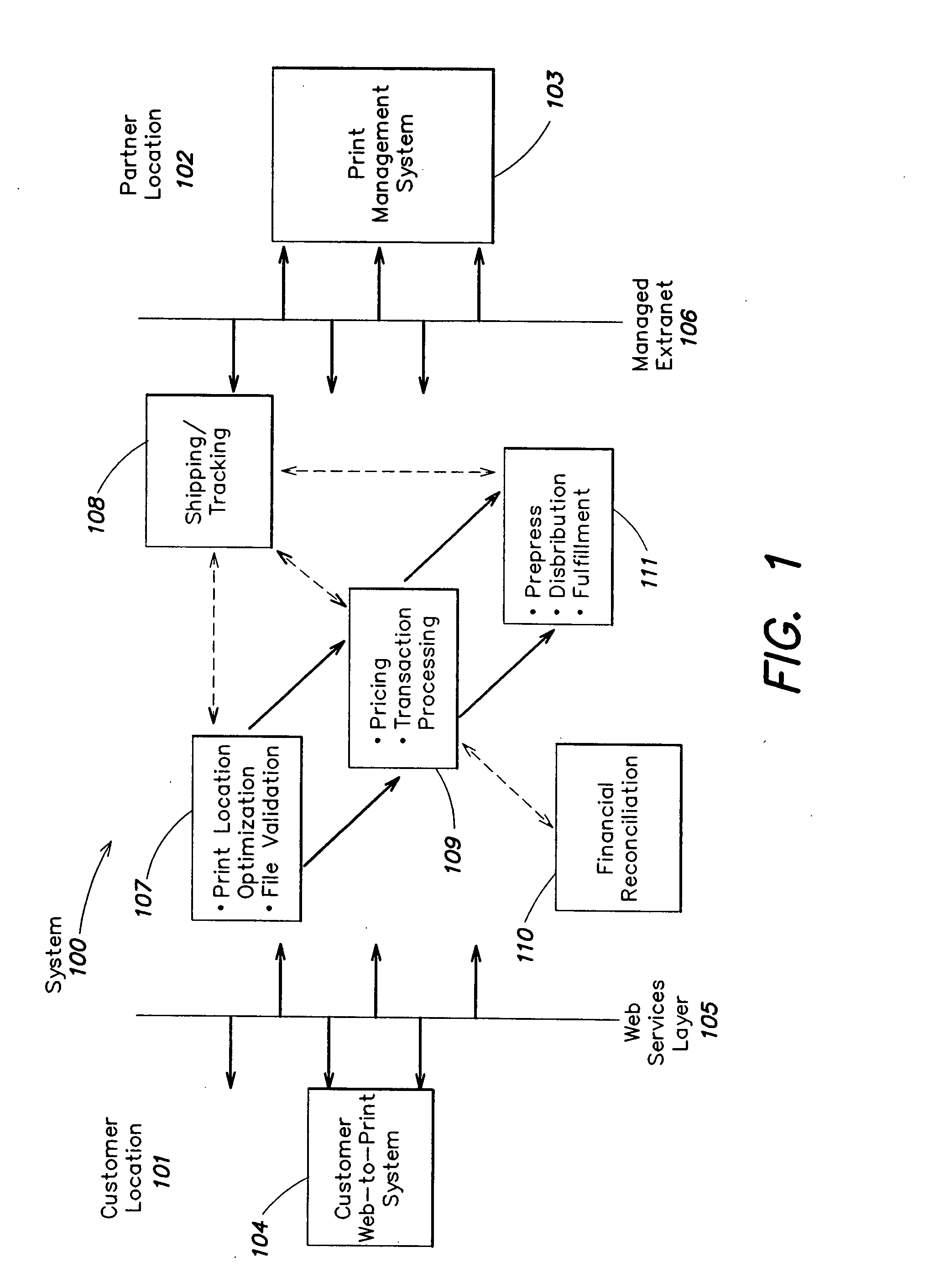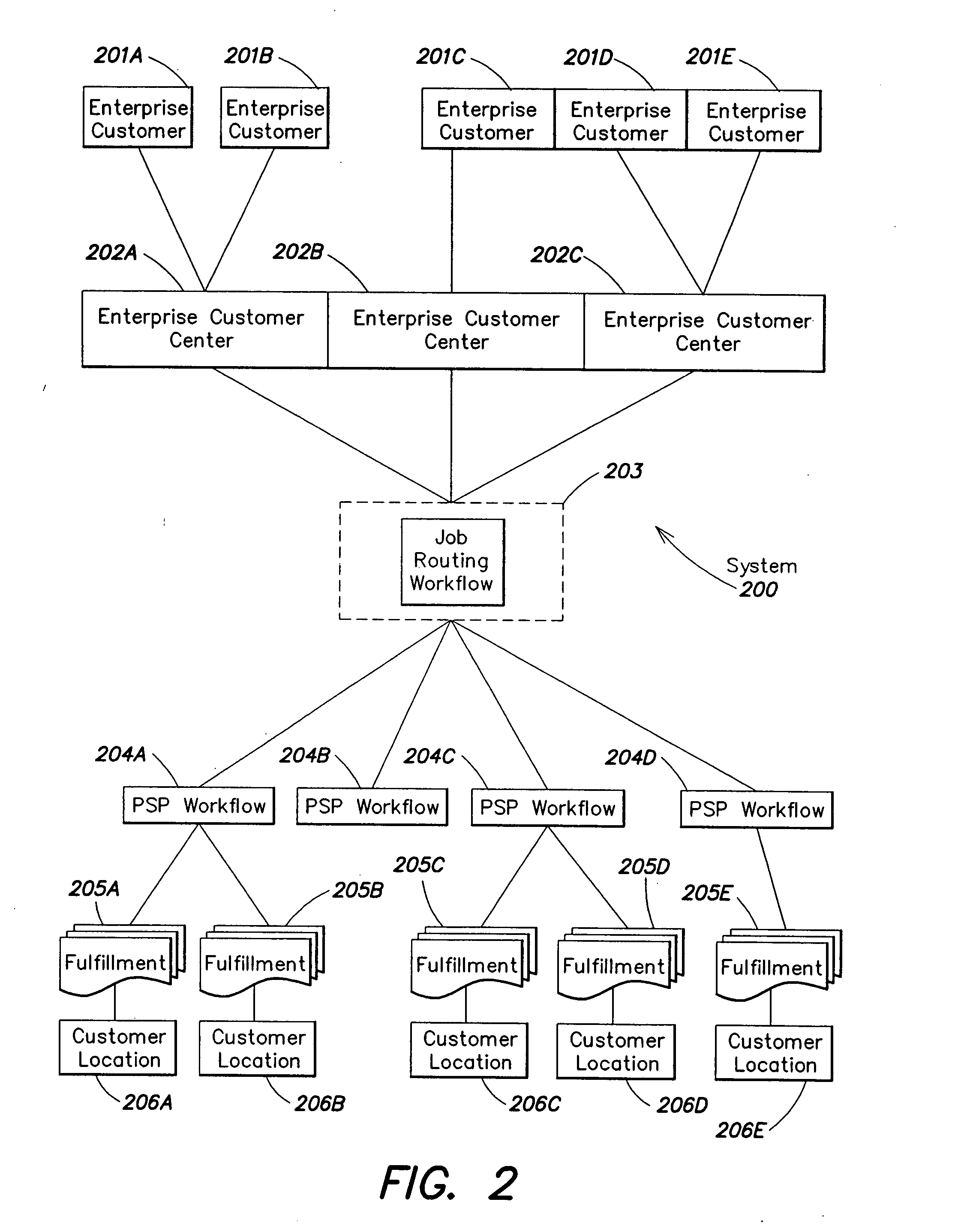[0009]According to one aspect of the present invention, a global print platform is provided that enables commercial printers and
graphic design firms to provide last-
mile print production for their enterprise clients. In such a
global system, local providers are transformed into global providers, permitting them to fulfill printing requests in an automated fashion. By eliminating the large
capital investment necessary to create a private global print network, these local providers are able to leverage their excess capacity to meet global production needs. According to one embodiment of the present invention, an architecture is provided that permits local providers to cost-effectively produce print products for consumers of a global print network.
[0016]According to one aspect of the present invention, print service providers (PSPs) compete based on cost to perform a particular print job. In one embodiment, the global print platform is adapted to allocate jobs based on minimum cost, thereby saving companies money by using such a
system. Such costs may be dependent on one or more parameters, such as, for example, shipping, production, labor or other costs specific to the PSP. For example, it is realized that a more distributed
system that prints product in an optimum location (e.g., closest to the print product
consumer) can be determined in order to minimize shipping costs. Further, other optimizations may be determined based on, for example, production costs, currency value, and other parameters.
[0017]According to another embodiment, the global print platform may be adapted to allocate jobs based on an availability of a print resource in the
global network. For instance, in a
global network having print resources operating at lower utilization may be employed to more adequately meet the needs of customers. With such a distributed system, capacity in the global network can be measured in real-time, and jobs can be allocated to the most appropriate resource(s). In this way, the utilization of the overall group of global printing resources is raised, as hot spots of demand for a particular print resource are minimized. Further, because the majority of excess utilization exists in local print service providers, a cost-effective way to reach such providers allows the
global system to more effectively use such excess utilization.
[0018]Further, it is appreciated that current web-to-print systems (e.g., the well-known Printable
System) allocate a single print resource to fulfill a single job. However, the job may be shipped to any one of a number of locations, and thus printing by a single PSP at a particular location may be inefficient, as additional shipping costs may need to be incurred to distribute the printed product to the necessary locations. Further, to reduce the time necessary to ship the final printed product, it is appreciated that the print location may be optimized depending on the location to which the final product is to be shipped. In one embodiment, a global distributed print architecture is provided that optimizes an allocation of portions of print job to multiple print locations. Such a distributed allocation provides a more efficient way of fulfilling the print job, and thus may provide lower costs to the Enterprise customer while also increasing the overall utilization of the global network by using multiple print locations to service print jobs in parallel. Further, customers may receive the final printed product more quickly, as ship times may be reduced by optimizing print locations.
[0026]According to one aspect of the present invention, a system for printing in a distributed communications network connecting enterprise customers of a graphic service firm and a plurality of print service providers is provided. The system comprises a financial component configured to charge a graphic service firm a service fee based on at least one global print job which is referred to at least one of the plurality of print service providers. According to one embodiment of the invention, the financial component is configured to charge a service fee to the at least one of the plurality of print service providers for the
referral of the at least one global print job. According to another embodiment of the invention, the financial component is adapted to receive
payment for the at least one global print job through one or more financial institutions. According to another embodiment of the invention, the financial component is adapted to provide
payment to the at least one of the plurality of print service providers upon completion of the at least one global print job. According to another embodiment of the invention, the system further comprises a pricing component adapted to minimize a production price of the at least one global print job.
 Login to View More
Login to View More  Login to View More
Login to View More 


